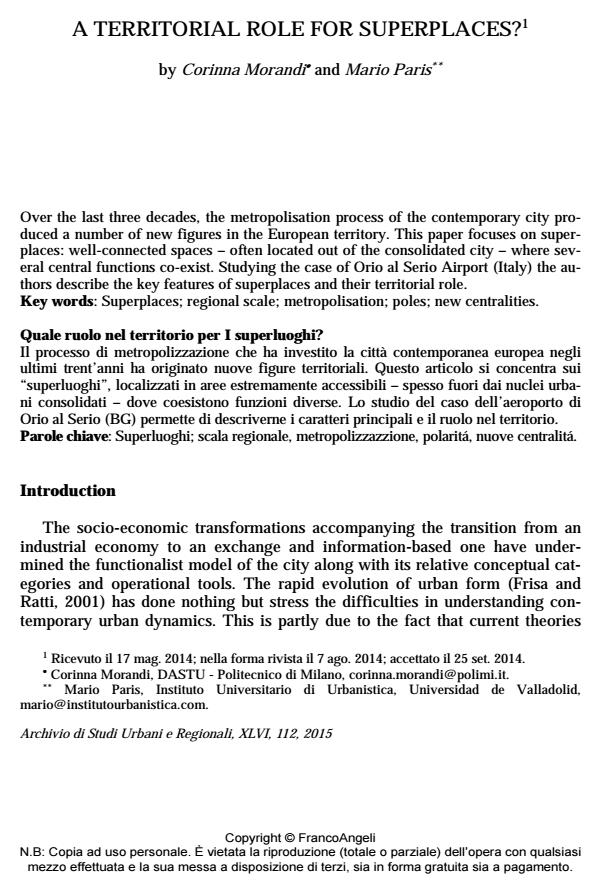A territorial role for superplaces?
Journal title ARCHIVIO DI STUDI URBANI E REGIONALI
Author/s Corinna Morandi, Mario Paris
Publishing Year 2015 Issue 2015/112
Language Italian Pages 26 P. 101-126 File size 224 KB
DOI 10.3280/ASUR2015-112006
DOI is like a bar code for intellectual property: to have more infomation
click here
Below, you can see the article first page
If you want to buy this article in PDF format, you can do it, following the instructions to buy download credits

FrancoAngeli is member of Publishers International Linking Association, Inc (PILA), a not-for-profit association which run the CrossRef service enabling links to and from online scholarly content.
Over the last three decades, the metropolisation process of the contemporary city produced a number of new figures in the European territory. This paper focuses on superplaces: well-connected spaces - often located out of the consolidated city - where several central functions co-exist. Studying the case of Orio al Serio Airport (Italy) the authors describe the key features of superplaces and their territorial role.
Il processo di metropolizzazione che ha investito la città contemporanea europea negli ultimi trent’anni ha originato nuove figure territoriali. Questo articolo si concentra sui "superluoghi", localizzati in aree estremamente accessibili - spesso fuori dai nuclei urbani consolidati - dove coesistono funzioni diverse. Lo studio del caso dell’aeroporto di Orio al Serio (BG) permette di descriverne i caratteri principali e il ruolo nel territorio.
Keywords: Superplaces; regional scale; metropolisation; poles; new centralities
- Urban Planning and Design for Megacities in the Global South Mario Paris, Alara Bilgic, pp.219 (ISBN:978-981-97-8369-4)
- Mega-Events and Legacies in Post-Metropolitan Spaces Corinna Morandi, pp.15 (ISBN:978-3-319-67767-5)
- Urban branding and place as a quality product: innovations in the urban experience Marichela Sepe, Michael Pitt, in Journal of Facilities Management /2017 pp.2
DOI: 10.1108/JFM-10-2016-0042
Corinna Morandi, Mario Paris, A territorial role for superplaces? in "ARCHIVIO DI STUDI URBANI E REGIONALI" 112/2015, pp 101-126, DOI: 10.3280/ASUR2015-112006